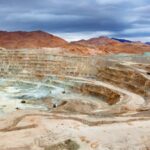Marine mammals live in a world of sound. Acoustic waves are four times faster underwater compared to air and there is much less sound dampening. Therefore, sound can travel very far underwater.
We know that loud underwater calls help whales and dolphins stay in contact with one another and work as a team. There are even whales that have dialects, just as humans do. Some dolphins send out short and high-pitched clicking sounds. From the echo they receive, the dolphins make an ‘acoustic image’, which helps them hunt for fish.
Human activities, for example shipping, marine construction, seismic surveys, dredging and many other things produce underwater sound too. This man-made sound can mask the communication sounds of whales and dolphins. They sometimes respond to noise by moving away from it, which can have consequences that are more serious if important behaviours such as feeding and mating are interrupted. Very intense sound can even injure whales and dolphins.
A new way of assessing impacts of noise on marine mammals
Because there is an increased usage of the marine environment, there is a huge need to assess the impacts of noise on whales and dolphins.
In the past, most assessments were based on a concept of non-moving marine life. However, this approach is outdated. We all know that whales are moving almost all the time and in relation to environmental variables and human impacts. The simulation of these movements is at the heart of a new technology MARAMBS, which stands for Mobile Animal Ranging Assessment Model for Biological Studies.
How does MARAMBS work? It’s a configured solution where a hydrodynamic model of an area is built, and then a statistical habitat model is used to identify environmental variables, which determine the movement of the whales. Agent-based models then come into play to simulate the whales’ movements.
What does this mean for the environment?
With this new technology, it is possible to predict impacts with much more precision than before. This helps regulators and companies reduce environmental risks. For example, it is possible now to choose an area and time of the year where the impact is low. Clients can also now select the most effective method to minimise sound effects. This can spare time and costs and at the same time help protect whales and dolphins.
MARAMBS is currently being applied in a large-scale project together with industry and public research funds in the Barents Sea.
Want to know more?
Watch the interview: Impacts of underwater noise on marine life








